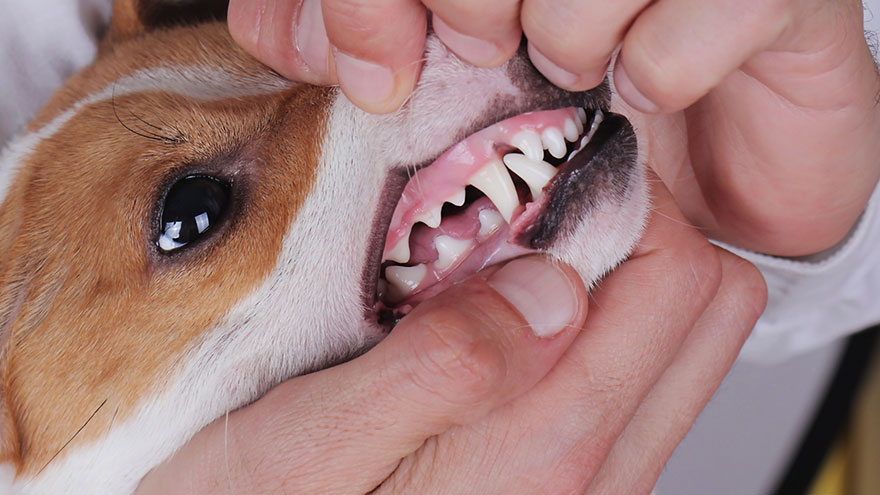Signs & Symptoms of Dog Mouth Disease
A dog’s mouth is vulnerable to periodontal disease, which can be uncomfortable and even painful for your dog. This disease can be treated, but not cured; tooth and bone loss are irreversible. In order to prevent these serious effects of mouth disease in your dog, be aware of its signs and symptoms. These symptoms may need to be evaluated by a veterinarian.
Visual Signs
The first sign that your dog may have mouth disease is bad breath that won’t go away. If that is the case, you may be able to identify several problems by simply looking inside your dog’s mouth. It will look different from the mouth of a healthy dog, particularly around the gums. The dog’s gums may be bleeding, red or receding from the teeth. Infected gums may even have pus coming up from around the dog’s teeth.
Behavioral Cues
Mouth disease in our dog often causes changes in behavior due to the discomfort associated with the disease. The pain in his mouth may make him paw at his mouth, and he may drool more often than usual. A dog with periodontal disease may also become depressed, which makes him reluctant to play or follow his normal routine. In addition, discomfort may cause irritability in the animal afflicted with mouth disease.
Eating Habits
A dog with mouth disease will typically experience changes in eating habits, according to Doctors Foster and Smith of Pet Education.com. Pain and loose teeth can lead to loss of interest in food, and problems with chewing make it difficult for the dog to eat. An upset stomach and diarrhea may result from excessive drooling or the presence of pus, and can contribute to a loss of appetite.
You Might Also Like :: Revolution Flea & Ear Mite Treatment


